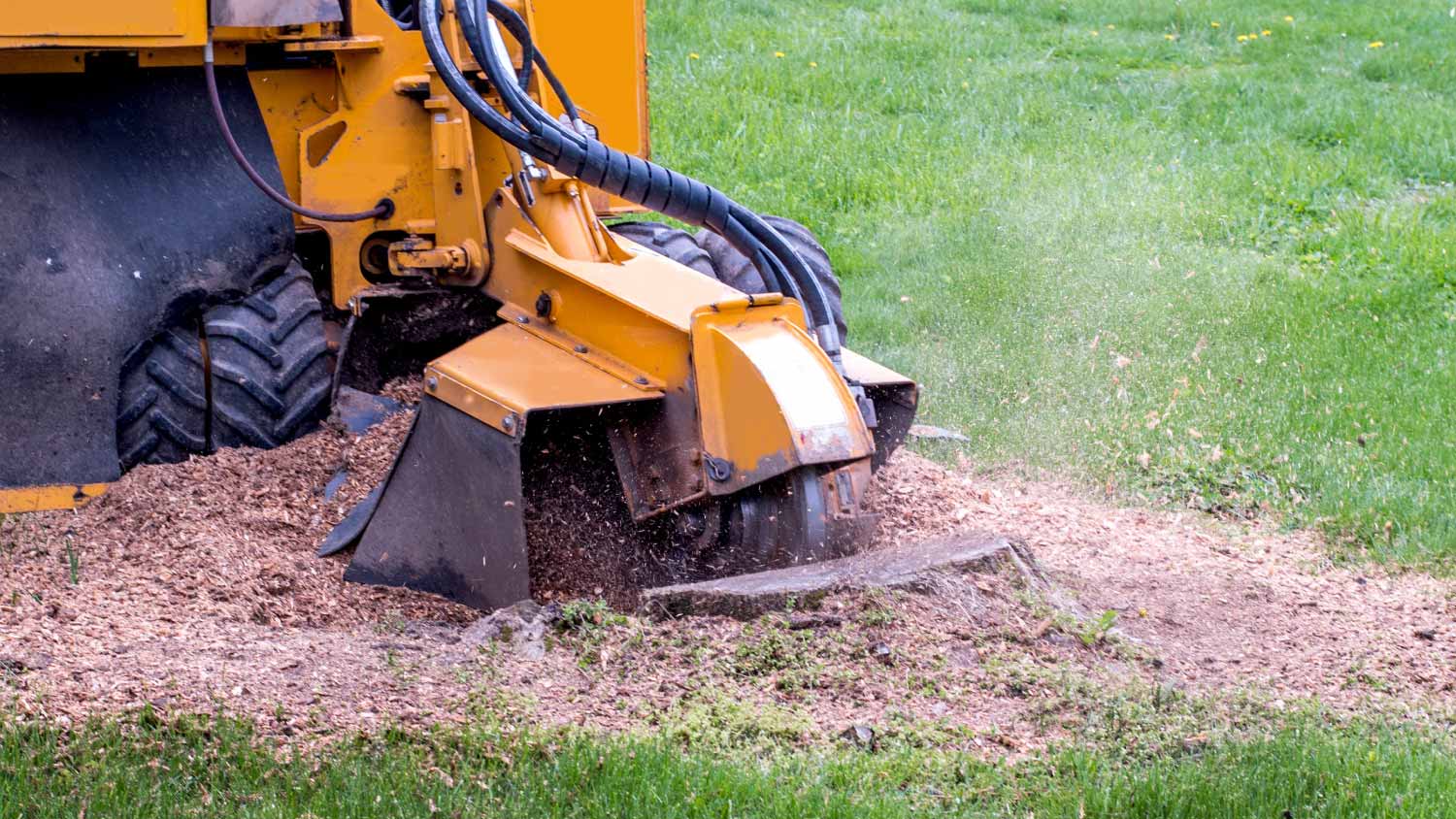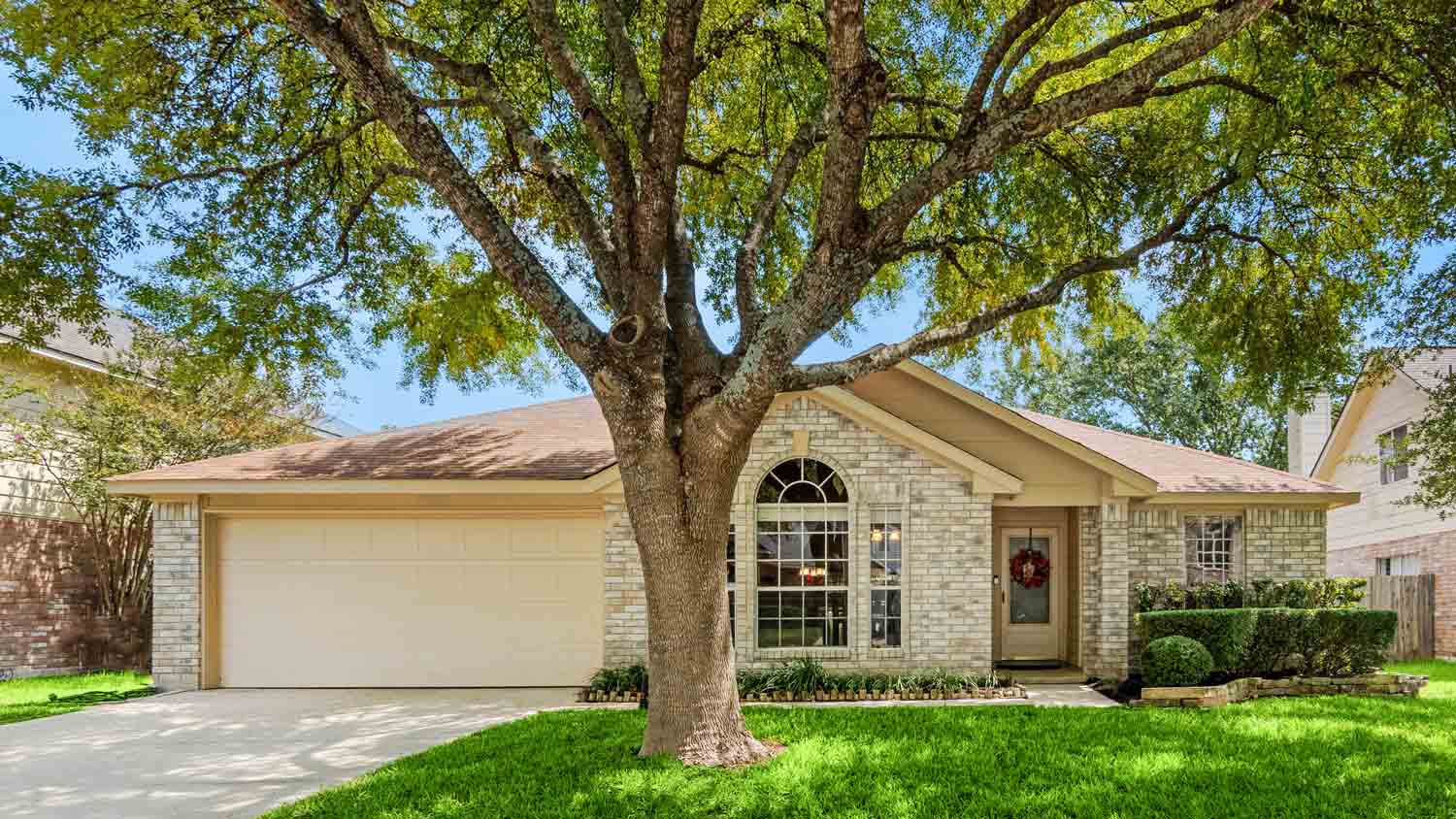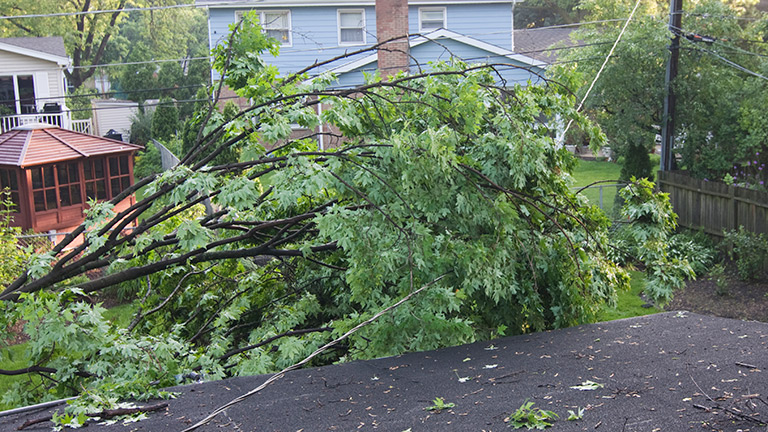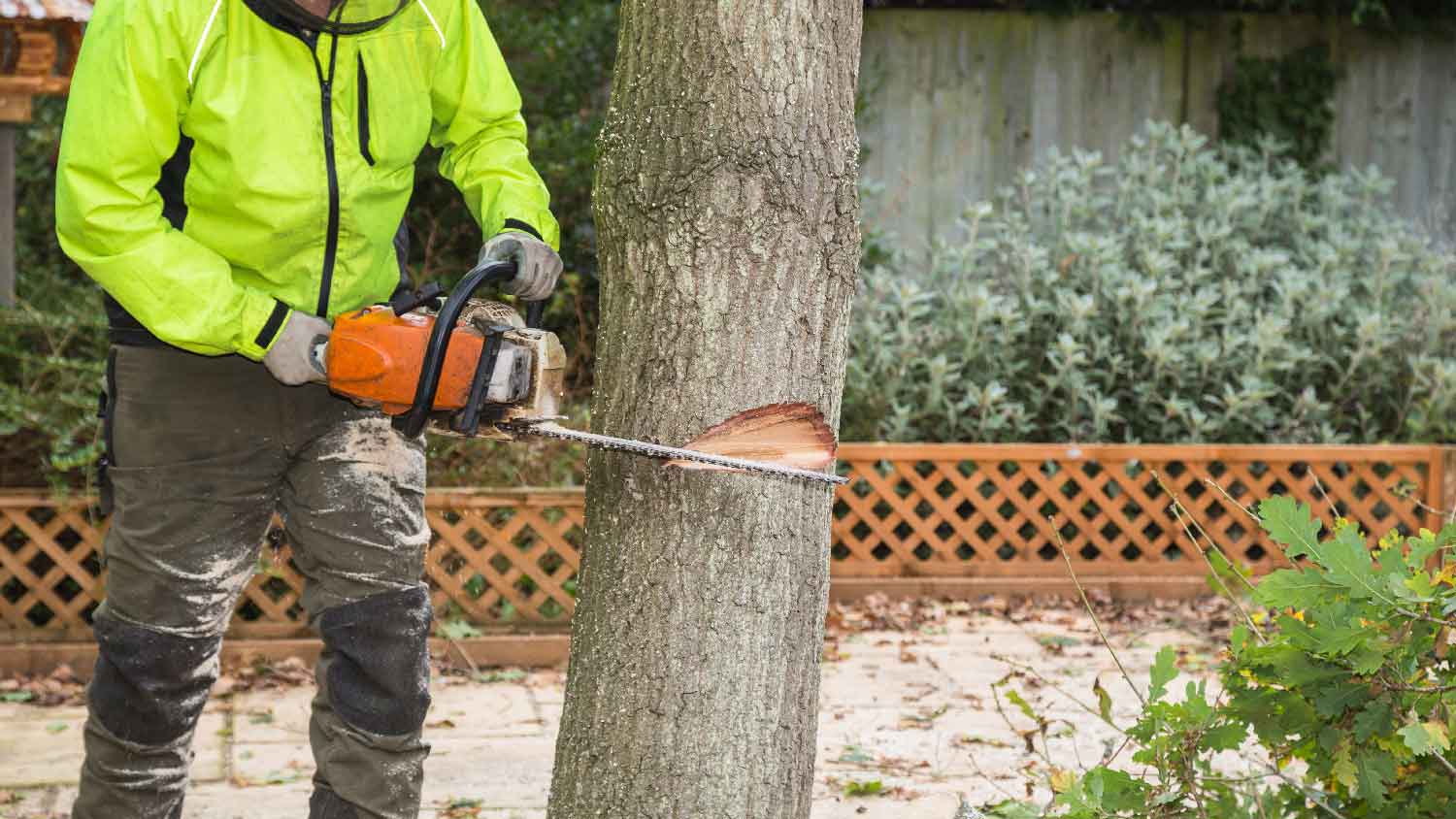
Budget for tree removal costs based on factors such as tree size, condition, type, accessibility, emergency services, additional projects, labor, and more.
Tree trimming costs an average of $460


Tree trimming costs an average of $270 to $1,800 or $460 in total.
Size, species, and how often you trim are the biggest tree-trimming price drivers.
Regular trimming boosts tree health, enhances safety, and improves property appearance.
Budgeting ahead helps avoid unexpected costs, and hiring a professional ensures safety and proper care for your trees.
This article was updated using automation technology and thoroughly reviewed for accuracy by HomeAdvisor Editor Ryan Noonan.
Tree trimming costs can vary significantly, with the average project ranging between $270 and $1,800 or $460 overall. In some cases, tree trimming can cost as little as $75 or reach as much as $2,000. How frequently you trim, where your trees are located, their species, and their overall size and complexity all influence the final cost. Build regular trimming into your yard budget early, and seeking professional help ensures a safe and effective job that protects both your property and the health of your trees.
Regular trimming keeps your trees healthy, safe, and looking their best. Your total tree trimming cost depends on a variety of factors, and here’s a closer look at how the costs break down.
Because the crew is already at your home with their gear, most tree trimming pros shave an average of $100 off the cost of every additional tree. For example, if the first tree runs $300, the next often drops to $200.
A tree’s species largely dictates how tall—and how tricky—it will be to trim. The larger the tree, the more challenging it is to access, trim, and haul away debris. Large and extra-large trees, between 60 and 150 feet or more, require more complex climbing equipment, tools, and heavy machinery for cutting and lowering thick branches. Here’s a breakdown of various tree heights and their trimming costs.
| Tree Height (Feet) | Average Cost Range |
|---|---|
| Under 25 | $80–$350 |
| 25–50 | $150–$800 |
| 50+ | $300–$1,800+ |
Diseased, decayed, infested, or structurally unsound trees may require additional care to prevent further damage. Expect to add $50 to $250 for inspections, pest treatments, or disease control.
The cost of living and standard contractor prices in your area influence your bottom line. If you live in an area with high costs for services, such as New York or San Francisco, expect tree trimming services to cost more than in rural or low-cost-of-living areas.
Tree trimming is often reserved for late winter when trees are dormant. Arborists can more easily identify branches to trim to optimize health and growth in the spring and summer. Because demand spikes in late winter, many pros charge peak-season rates during that window.
If professionals charge by the hour, rates range from $25 to $50 per hour per employee. Arborists are more specialized and cost more, ranging from $75 to $200 per hour.
Local tree trimming contractors may use hourly rates to calculate a set fee for your project’s specifications, per tree, or per project. The company uses these details to build a rate that encompasses related fees, including the number of employees required on-site and the approximate job timeline.
The immediate landscape can also affect costs—for instance, densely forested areas with tall oaks and pines may involve higher fees, as they may not be accessible for bucket trucks. Power lines, overhanging structures, and other obstructions or hazards may likewise make accessibility challenging.
Arborists will inspect your trees before trimming, which can add between $30 and $300 to the total costs. This is important for diagnosing and addressing rot, pests, structural issues, and soil health.
While many types of fungi, insects, and animals play a role in a healthy tree ecosystem, pests can significantly damage tree structures and health. Tree pest control costs vary depending on the species but average between $50 and $250.
You may require monthly pest control treatments and periodic inspections to remediate the tree. Look for these pests:
Ants
Aphids
Emerald ash borers
Mites
Oak wilt
Root rot/fungus
Shield lice
Termites
Woodpeckers
Tree trimming estimates may include hauling branches and cleaning up your yard. If not, hauling and disposal costs add an average of $25 to $100. A more thorough yard cleanup that includes pruning, leaf removal, landscaping, and raking adds to your costs.
Depending on your location and the type of tree species, you may be required to obtain a permit for tree trimming. Costs vary by region and local regulations. Your tree trimming pro can help you with the permitting process and will be knowledgeable about the regulations in your area.
Different tree species vary in size, branch density, and overall structure, all of which involve distinct approaches, specialized techniques or tools, and associated costs. Arborists in your region may specialize in local or native trees, particularly since each species may require different trimming tactics, schedules, or environmental preservation methods.
| Tree Type | Average Cost Range |
|---|---|
| Crepe myrtle | $80–$400 |
| Cypress | $150–$1,200 |
| Oak | $180–$1,500 |
| Palm | $100–$1,500 |
| Pine | $200–$1,800 |
Crepe myrtle trees are common flowering trees with dense, shrub-like branches. Since they only grow up to 30 feet, crepe myrtles are easier and less expensive to trim, ranging between $80 and $475.
Cypress trees range from 15 to 100 feet, and trimming them requires specialized techniques due to their dense, round structure. Cypress trimming costs range from $475 to $1,200.
Whether it’s a Northern Red or a Willow Oak, this sturdy species grows large and dense. Mature trees can grow over 80 feet with a 40-foot spread. Depending on whether the job requires a bucket truck or a climbing arborist, you'll pay between $450 and $1,800 for oak trees to account for size, dense wood, and potentially intricate trimming.
Palm heights swing widely by region—a fan palm in Southern California can top 80 feet, while southeastern varieties stay much shorter. That’s why the price for trimming palm trees spans $100 to $1,500. Removing dead fronds for a cleaner look is delicate work best left to a pro.
Pine trees can grow anywhere from 50 to 150 feet, and their dense branches make climbing challenging for arborists. Pine tree trimming costs between $200 and $1,800, with the higher end of the cost range representing the complexity of safely accessing and removing high branches without damaging the tree.
Mangrove trees are protected in many regions, particularly in Florida and along other coastal areas, and the Department of Environmental Protection strictly regulates trimming. These regulations may restrict the amount permitted for trimming. Arborists may have higher rates for mangroves and similarly protected species, such as California Live Oak and California Black Walnut, since they may involve more specialized skills.
Tree trimmers and arborists may offer insights and recommended services based on their assessment of your trees and property to optimize overall landscape health.
| Service Type | Average Cost Range |
|---|---|
| Pruning | $400–$800 per tree |
| Tree removal | $200–$2,000 |
| Stump grinding/removal | $30–$1,600 |
| Hedge and shrub trimming | $450–$1,440 |
Pruning costs between $400 and $800 per tree. While pruning and trimming overlap, pruning specifically prepares dormant shrubs and trees to bloom next season. It removes dead or wilted areas of branches to promote growth. Root pruning can help prevent hardscaping or plumbing damage as well as optimize the tree’s health.
Removing a tree or stump costs between $200 and $2,000; its size, health, and placement all play a role. It's important to always trust full tree removal to a professional, as you'll need local permits to remove certain tree species. For stump grinding and removal, plan for $3 per inch or approximately $150 to $1,600.
While not the same as tree trimming, hedge and shrub trimming are often included in bundled services. Hedge and shrub trimming costs $450 to $1,440, helps maintain the overall appearance of your property, and promotes a landscape.
Tree trimming isn’t optional, but you can keep the price in check with these tips:
Trim multiple trees at once to take advantage of bundling discounts and reduce per-tree costs.
Compare quotes from multiple contractors to find the best pricing structure and determine which services are included.
Arrange regular maintenance to prevent your trees from growing unruly or diseased.
Consider treating your trees with approved disease or pest control to ensure their health and reduce the risk of complications during trimming.
No place is more important than your home, which is why HomeAdvisor connects homeowners with local pros to transform their houses into homes they love. To help homeowners prepare for their next project, HomeAdvisor provides readers with accurate cost data and follows strict editorial guidelines. After a project is complete, we survey real customers about the costs to develop the pricing data you see, so you can make the best decisions for you and your home. We pair this data with research from reputable sources, including the U.S. Bureau of Labor Statistics, academic journals, market studies, and interviews with industry experts—all to ensure our prices reflect real-world projects.
From average costs to expert advice, get all the answers you need to get your job done.

Budget for tree removal costs based on factors such as tree size, condition, type, accessibility, emergency services, additional projects, labor, and more.

Who will pick up stump grindings? See if a stump removal or landscaping service handles cleanup and what to confirm before you hire

Wondering who to call to grind a stump? Learn whether a stump removal company or tree removal service should handle your stump grinding—start here

Who to call for a sick tree? Learn when to hire an arborist or tree maintenance pro and what a diagnosis may cost. Start here

Who do you call for a tree on a power line? Learn when to call the utility company vs. a tree removal service and see how pros handle it

Learn who to call to cut down a tree. Compare a tree removal specialist vs. an arborist, see steps, costs, and hire with confidence